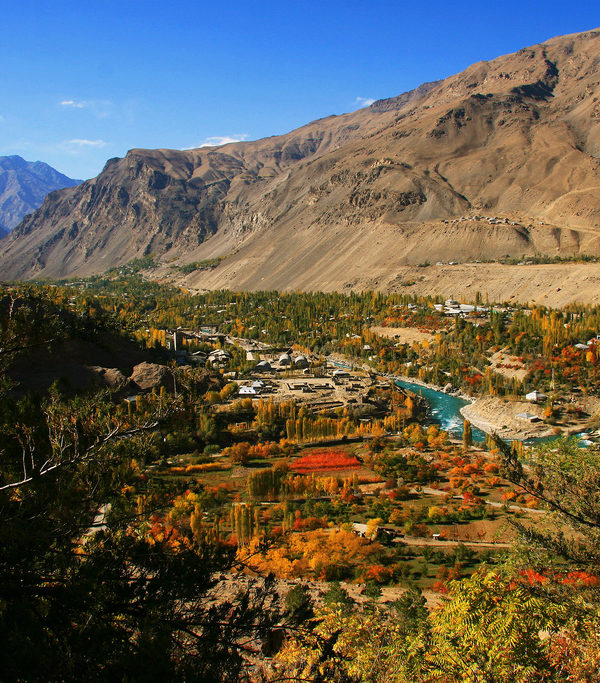The city is connected by roads with Dushanbe and Osh. There is also a small airport here, whose “inhabitants” are small-sized propeller aircraft making regular flights to Dushanbe and other cities of the republic several times a week. The airport in Khorog is the only regular air port in the whole Gorno-Badakhshan Autonomous Region.
The population of this small settlement in 2003 was 30 thousand people. According to the national composition of the population, the Pamir Tajiks, practicing a religion called Ismailism, constitute the population.
Khorog today
At the moment, Khorog is a regional center of management, trade, transport and, of course, education. Higher education institutions such as the new branch of the University of Central Asia, Khorog State University and the Lyceum of the Aga Khan Foundation (the spiritual leader of the Ismaili community) function here. Residents of the city stand out against the background of other Tajiks with their high level of education.
Khorog is a very beautiful, green city with huge poplars and unusual traditional Pamiri houses on the outskirts. Despite the fact that the standard of living in the city is relatively low, in recent years several new hotels and guest houses have been built here, as well as Internet cafes and restaurants serving Tajik cuisine.
The city has very typical buildings for the Central Asian region, combining traditional Pamirian houses and Soviet-style buildings. The city center (along the Pamir Highway) consists entirely of Soviet buildings, quite ordinary, but along the river and on the hills above the city, many unique and colorful Tajik houses with large terraces have been built.
International aid organizations are very active in the development of the city, in particular the Aga Khan Foundation and the UN and EU development programs. Year by year, the number of tourists seeking to visit the city on its way along the Pamir Highway, which, despite the small number, bring economic benefits and significant changes in the region, is growing.
Botanical Garden in Khorog
Above the eastern part of the city of Khorog, at an altitude of 2320 m above sea level, on the coastal terraces of the Shahdara River is the famous Pamir Botanical Garden, which ranks second in the world in height (after the botanical garden in Nepal), with unique flora brought from various parts of the world. It is working on the acclimatization of plants in the mountains. Many trees and shrubs from Europe, America, Africa and Australia have already taken root in the Horog Botanical Garden.
Kofir-Kala
30 km from Khorog on a high rocky cliff, in the village of Bogev, is located the archaeological complex Kofir-Kala, consisting of a fortress with a citadel and the remains of two round temples with a radius of 11 and 9 meters. Both temples had stone sufas along the walls, hearths and stone obelisks in the middle. Probably, the temples were overlapped with wooden stepped ceilings with a skylight at the zenith. In combination with the fortress walls and towers, temples were in antiquity and the Middle Ages the well-fortified social and religious center of Shugnan associated with the worship of the sun. The tradition of erecting round in terms of buildings and the solar symbolism associated with them was mainly characteristic of the Saka cemeteries of the Eastern Pamirs.
Mystery Mountain Kuhilal
At 47 kilometers from Khorog, a mountain of the same name rises above the village of Kukhilal – the deposit of the famous Badakhshan “Lala” – a noble spinel, also known as “Badakhshan Lal” and mentioned in Khudud al-Alam (982), the book “Mineralogy” by al Biruni and in the book of Marco Polo (13th century), who wrote that the locals “dig in the mountain Shigkhinan (Shugnan) and extract balashes (rubies) there by the royal order”. During research in Mount Kuhilal, about 500 ancient workings of the 8th – 11th centuries were discovered.

